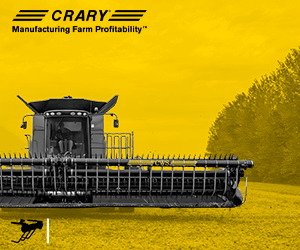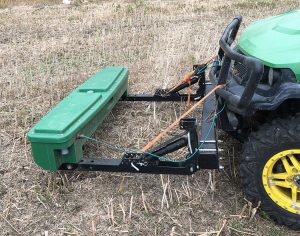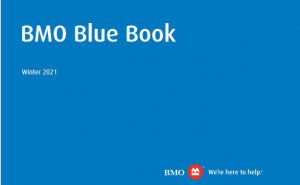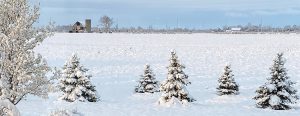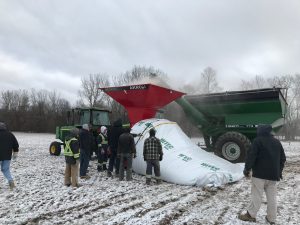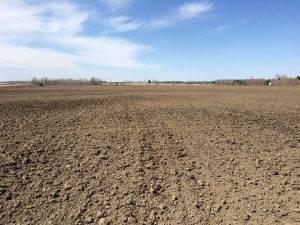Making hay
THE BENEFITS IN A GRAIN ROTATION
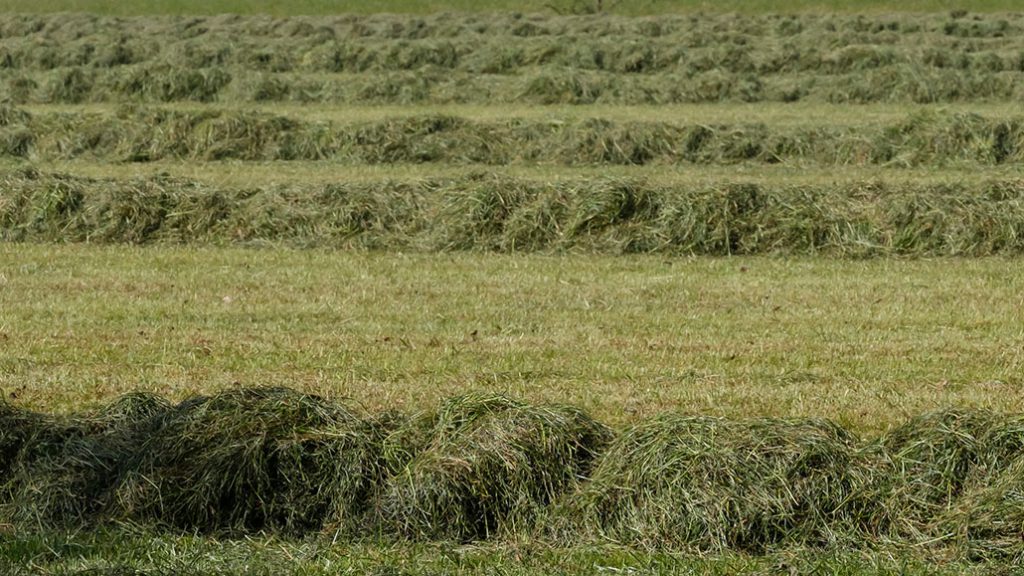
FORAGE ACRES IN Ontario have decreased by about 40 per cent in the last eight years, with just under 1.5 million acres planted in 2020. But there are good financial and environmental reasons to consider adding hay into your grain crop rotation.
“Hay is an opportunity to enhance soil health, it is able to return good money for the investment we put into it,” says Ian McDonald, “and erosion control with forages is just phenomenal.”
McDonald, crop innovations specialist with the Ontario Ministry of Agriculture, Food and Rural Affairs (OMAFRA), led a discussion, entitled Hay Cash Croppers!, on bringing hay into the grain crop rotation during the Ontario Agricultural Conference.
Hay is in demand — particularly by the equine industry — and the usual value is 1.3 times that of corn. Well managed forages rival corn yields; four to five tonnes per acre (158-196 bushels/acre) of corn is equal to four to five tonnes/acre of hay.
The key is putting in the management to get a high-quality crop.
MANAGEMENT
Matt Bergman, a farmer in Jarvis, says he uses the same intense management practices with his forages as he does his grain crops. He currently has 1,100 acres of hay, ranging from pure timothy to alfalfa to multiple mixes depending on the land.
“I spend more on fertilizer with hay than corn or soybeans. I tend to fertilize with something after every cut, depending on soil samples for what the ground needs. It’s a high maintenance crop,” says Bergman.
Attention to detail pays off.
For example, with pure alfalfa — using the correct varieties with a high seeding rate, they are able to do multiple cuttings per year (anywhere from three to five). They aim for a high relative feed value with high leaf retention with soft stems, great colour, and high relative feed value.
“We sell forages and crops at all different prices, but it does better than our soybeans and corn,” says Bergman. “With forages you essentially get to pick your price. If you make a good crop of hay you have the ability to sell it for more than the market dictates. If you have a good crop of soybeans you get the same price as the next person.”
Bergman started to double crop timothy with soybeans three years ago. The result has been a high value timothy and a reasonable soybean yield.
“Each field is different and understanding the customer and what market you are trying to hit is important,” says Bergman who sells to an overseas market.
DRYING
Hay must be baled at 25 per cent moisture within 48 – 60 hours of being cut and immediately removed from the field and put into some form of a dryer to bring it down to 12%. It then needs to be put into proper storage.
McDonald notes that some farmers use the need to dry hay has a reason not to grow it — but he says it isn’t any different than needing to dry corn to have a marketable crop.
“There is a little bit higher drying cost, but we gain more dry matter on the hay, more leaf retention, and lower operating costs in the fields,” explains Fritz Trauttmansdorff, a Jerseyville farmer and chair of the Ontario Hay Co-operative.
“Drying allows you to cut more acres of hay within a short window, and end up with hay that is done properly with no worries about moulding,” adds Bergman.
SOIL BENEFITS
Farmers who want the agronomic benefits of hay but not the management or marketing, can enter into an arrangement with another farmer on a per acre or per cut basis.
That is the route Henry Prinzen, a farmer in Jarvis, has gone with. He has hogs on the farm and grows grain on 1,500 acres in a corn, soybean, wheat rotation; he says that keeps him busy enough. However, he farms multiple fields that used to be hay, and he can see the benefits even 10 years later — with a 10 bushel/acre advantage in yield.
“Corn hasn’t been a huge cash crop in the Haldimand area, and we want to push the boundaries of higher and higher yields,” says Prinzen. “Some years it is a little disappointing when things don’t go your way with rain; but you can really see those are the years where hay is giving you that resiliency in your soil that you aren’t getting when you are just in a normal corn, soybean, wheat rotation.”
He has partnered with Bergman and another neighbour to rotate hay on the fields that need it the most — those with poor soil health and low organic matter.
Forages capture sunlight more days of the year. They help to manage water by enhancing infiltration, increasing water holding capacity, reducing surface runoff, and reducing erosion. They also reduce the need for tillage and increase soil aeration. Forages improve soil resiliency by enhancing soil health and supporting microbial life.
McDonald reiterates though that high-quality hay is not your grandpa’s hay crop or even a typical farm’s hay crop. If you can’t commit to the management — he says stick to your grains or buy the expertise.
This article is based on information provided during a session of the Ontario Agricultural Conference. Grain Farmers of Ontario was a sponsor of this conference. •


